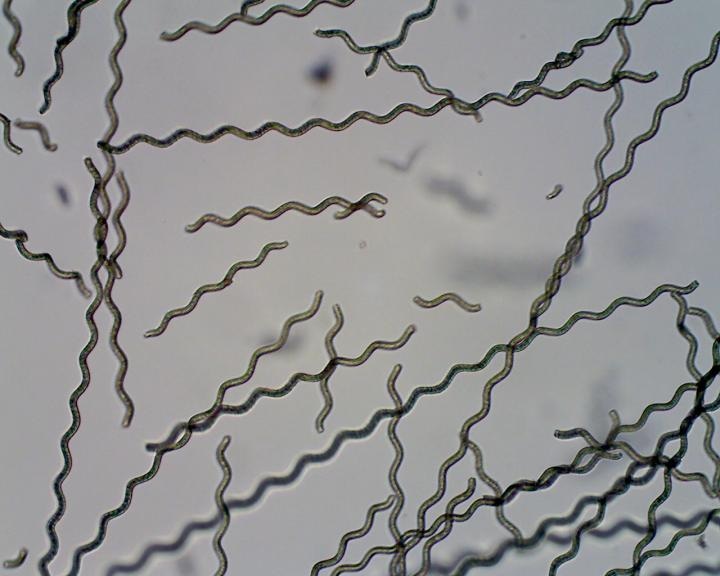Nov 23 2017
Miniature remotely operated robots could be engineered to diagnose and treat illness in hard-to-reach areas of the human body, research suggests.
 Spirulina algae coated with magnetic particles to form a microrobot. Devices such as these could be developed to diagnose and treat illness in hard-to-reach parts of the body. (CREDIT -Yan et al Science Robotics 2017)
Spirulina algae coated with magnetic particles to form a microrobot. Devices such as these could be developed to diagnose and treat illness in hard-to-reach parts of the body. (CREDIT -Yan et al Science Robotics 2017)
In tests, a group of robots measuring a few millionths of a meter long - roughly the size of a blood cell - were steered magnetically to sites in the stomach of rats.
The robots were produced by coating minute algae with magnetic particles.
They could be tracked in tissue near the skin's surface by imaging the algae's natural luminescence, and in hard-to-reach deeper tissue by magnetic resonance imaging (MRI).
The researchers propose their findings could pave the way to deliver drugs to parts of the body that are otherwise hard to treat.
The robots could also sense chemical variations connected to the onset of illness within parts of the body, which makes them potentially beneficial as probes for remote diagnosis.
An international group of researchers, led by the Chinese University of Hong Kong, created micro-robots by coating a microscopic algae with safe, biocompatible magnetic particles. The devices can effortlessly swim in biological fluids, such as gastric fluid and dilute blood.
The time taken for the robots to function and biodegrade within the body could be customized by modifying the thickness of their manufactured coating.
In lab tests, the devices were found to discharge potent compounds from the algae core during degradation, which selectively destroyed cancer cells while leaving healthy cells untouched. Additional research could reveal whether this might have protential as a treatment, researchers say.
The research, published in Science Robotics, was performed in partnership with the Universities of Edinburgh and Manchester. It received supported from the Research Grants Council of Hong Kong.
A small-scale robot that can be remotely guided, is easily tracked and harmlessly biodegrades, potentially overcomes many of the challenges faced by minimally invasive therapies. We hope our discoveries will pave the way for the development of useful diagnostics or treatments.
Qi Zhou, School of Engineering, The University of Edinburgh